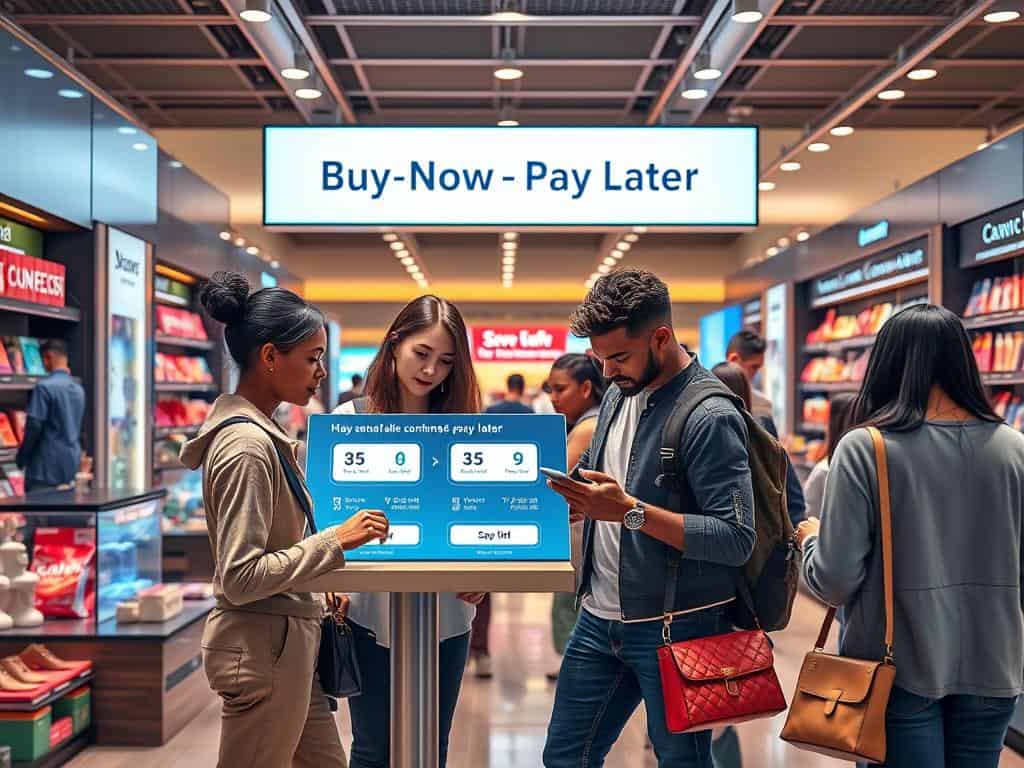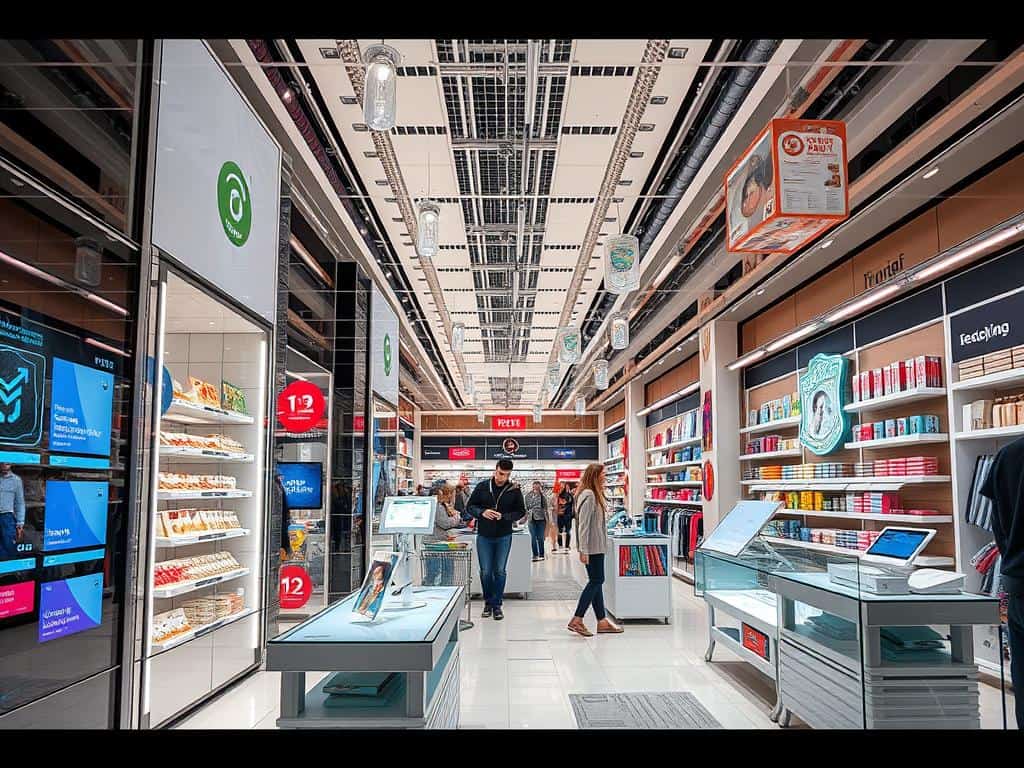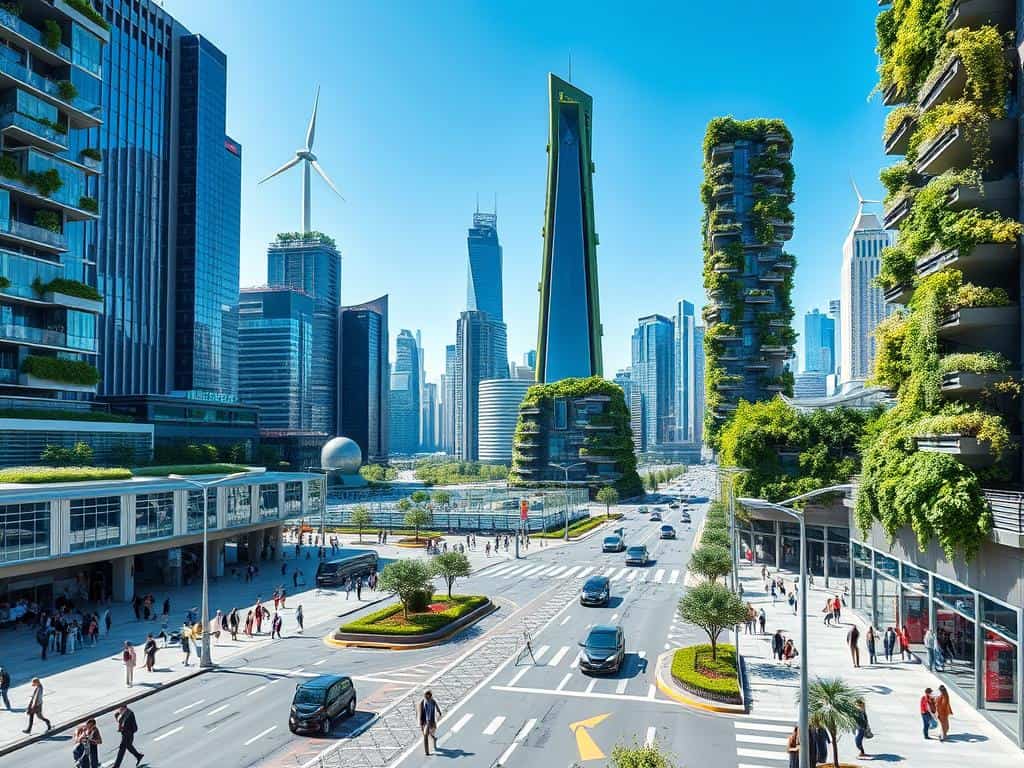Did you know global retail sales are set to grow by 6.7% in 2024? This shows a big change in how we shop, with innovation and flexibility now key. As we look ahead, we face challenges like inflation and rising expectations from shoppers. Yet, there’s a big push for sustainability too.
These changes are making shoppers want more personalized experiences. At the same time, online shopping is expected to grow fast as pandemic issues fade. Let’s dive into the trends shaping retail for 2024, like AI, recommerce, and changing consumer tastes. These shifts aim to make our shopping experiences better and more efficient.
Key Takeaways
- Global retail sales are forecasted to increase by 6.7% in 2024, highlighting a vibrant market.
- E-commerce sales in the US are projected to soar to $1.7 trillion by 2027.
- Recommerce is rapidly outpacing traditional retail, growing 16 times faster in 2023.
- The AI market in retail is expected to explode to $55.5 billion by 2030, revolutionizing operations.
- Sustainability is becoming a priority, with 32% of US shoppers switching brands for eco-friendly practices.
Emerging Trends in the Future of Retail
The retail world is changing fast, thanks to new tech and what shoppers want. By embracing these changes, stores can grow and work better. They’re focusing on making shopping better with AI.
Artificial Intelligence Enhancing Retail Operations
AI is making shopping better and more efficient. It’s expected to grow a lot, from $5.5 billion in 2022 to $55.5 billion by 2030. AI helps with things like finding the right products and making ads that fit what you like.
This change helps stores stay ahead and manage what they have better. It’s all about making shopping better for everyone.
The Rise of Recommerce
Recommerce is making shopping greener by using old items again. More people want to shop in a way that’s good for the planet. Big brands are starting their own second-hand shops.
This trend is growing fast, expected to hit $64 billion by 2024. It’s a win-win for shoppers who want to save money and help the environment.
Growth of Retail Media Networks
Retail media networks are becoming key for brands to reach customers. With changes in online ads, stores are looking at their own ad spaces. This could make $125.7 billion by 2028, beating TV ads.
This change shows how important it is for stores to use their own data. It helps them connect with customers in a meaningful way.
Shifts in Consumer Behavior Shaping Retail
Consumer behavior is changing a lot, affecting how stores operate. New payment options like Buy-Now-Pay-Later are big for millennial and Gen Z shoppers. These options help manage budgets better, fitting the financial needs of younger people.
The Impact of Buy-Now-Pay-Later Options
Buy-Now-Pay-Later is becoming popular, with 43% of stores now using it. It attracts millennials and Gen Z, who value ease and flexibility. Stores using these options might see more loyal customers and bigger sales, as people feel they can buy without worrying about money right away.
Growing Demand for Sustainability
There’s also a big push for sustainable shopping. More people want to buy from brands that care about the planet. In fact, 32% of shoppers have chosen different brands because of their green efforts.
This shows stores need to show they care about the environment. With the SEC’s new rules on climate disclosures, stores that focus on sustainability will appeal more to Gen Z and others who care about the planet.

Omnichannel Experience: Integrating Online and In-Store Shopping
The retail world is changing fast. It turns out, brick-and-mortar stores are making a comeback. People want to shop in stores for unique experiences that online shopping can’t match. Stores are key for selling things like clothes and accessories.
So, making stores better is key to keeping customers coming back. It helps build loyalty and gets more people to visit.
The Revival of Brick-and-Mortar Stores
Many brands want to grow their store presence in 2024. They’re mixing online and in-store shopping. This way, stores become places where customers can engage and have fun.
Stores can host events that mix digital and physical shopping. This attracts both online and in-store shoppers. Big names like Amazon and Nike have shown how well this works.
Seamless Shopping Across Social Media Platforms
Social media shopping is big now. Over 52% of shoppers buy things on Instagram and TikTok. This shows how important social media is for sales.
Brands need to make shopping smooth across different platforms. This way, customers have a better experience. It makes shopping feel personal and easy.
Conclusion
The future of retail in 2024 is exciting and full of change. It’s all about new tech, higher customer expectations, and caring for the planet. With over 57% of spending online, stores need to use these trends to improve shopping for everyone.
They should use artificial intelligence and new payment options like Buy-Now-Pay-Later (BNPL). This will meet the needs of today’s smart shoppers.
Now, more than ever, shoppers want a smooth online and in-store experience. Sixty percent of them like it when brands work well together online and in stores. Stores should be strong online and also have physical places.
With 65% of people buying things on social media, mixing these channels is key. It can lead to more people engaging and buying from brands.
Also, focusing on being green and marketing with purpose is key for success. Sixty-one percent of shoppers prefer brands that care about more than just making money. Stores that use new tech and act ethically will connect with shoppers who want honesty and responsibility.
As we look ahead, stores need to be ready to change and grow. They must be prepared for the challenges and chances that come with this new retail world.



